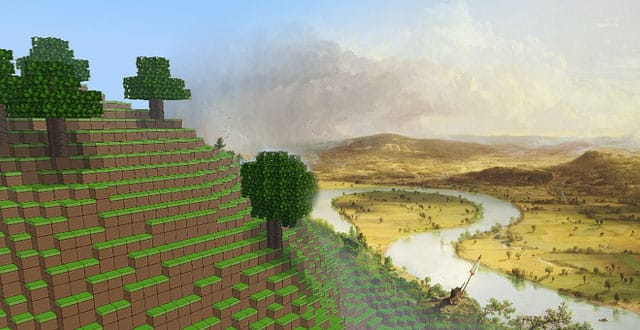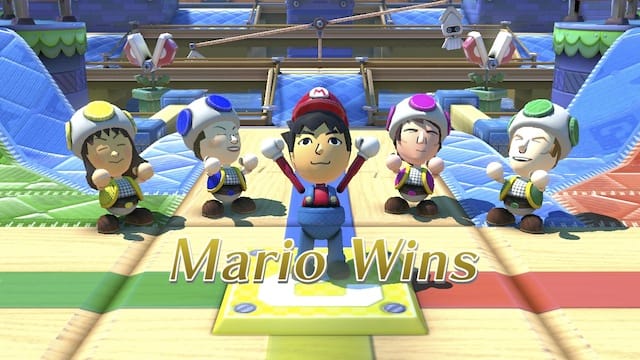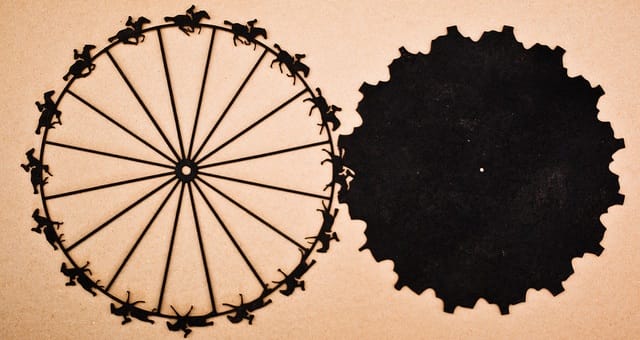Over the River and Through the Woods

Careening down rail tracks laid into the earth, viewers are catapulted into a rollercoaster tour of an epic landscape—from green fields to mountain crags, rolling through lakeside vistas and vibrant valleys. Though it has the ring of natural splendor or a trip through a national park, the landscape here is entirely artificial. It was created in the runaway hit sandbox game Minecraft, and it can only be experienced through a computer screen.
Minecraft‘s game mechanics are built almost entirely around the idea of landscape—exploring a landscape, or building a new landscape. Though this sandbox approach remains fresh in videogames, Minecraft’s presentation of landscape as a mutable yet transcendent experience has precedents in visual art. YouTube has recently exploded with video tours of players’ created worlds, and these remind me of landscape painting—artists attempting to create and tame nature, like the Transcendentalist landscape paintings of Albert Bierstadt or the boiling skies and seas of J.M.W. Turner.
Minecraft is a revelatory genre of landscape art, with its interactivity and wide-open canvas of possibilities. But the concepts of nature and landscape in the game are hardly new to art. The landscapes that players create in Minecraft look effortlessly beautiful, almost organic, upon completion. In reality, they require an extreme degree of control and planning, an active sculpting of the “natural” world. Landscape painting involves much the same process, from the Hudson River School to the seascapes of the Dutch Baroque.
In the same way that a player will choose to sculpt the earth into mountains and valleys, dig a trench, or construct a shelter in Minecraft, so Thomas Cole uses his paintbrush to create the sweeping crags and vistas of his iconic Hudson River School painting View from Mount Holyoke, Northampton, Massachusetts, after a Thunderstorm, also called The Oxbow (1836). A Minecraft player might create a dense forest; Albert Bierstadt, another painter of the Hudson River School, creates sunlit canyons and mountain lakes purer than mirrors. In these examples of landscape art, artists create their own versions of nature; neither is perfectly mimetic, nor attempts to be.
In both videogame and painting, artists make something from nothing with a pre-set visual vocabulary of “natural” signifiers: trees, shrubs, rivers, and hills. From this palette, players and painters are free to let their imaginations roam—but only within the bounds of a preconceived idea of nature. To me, this combination of the organic and the artificial creates an idealized version of nature, a humanized simulation of something as wild as the true natural landscape.
This is why a YouTube video tour through a huge Minecraft world, or a long stare at a stately Thomas Cole or Pieter Bruegel the Elder painting, feels so transcendental and so magnificent. It’s because these image-makers have brought the overwhelming hugeness of nature down to a human scale and controlled it, distilling it into a visual form that we can process. It’s this process that gives landscape art its power.
Our visual progress through a great landscape painting is much the same as a YouTube video of a player’s Minecraft world. We notice different landscape elements that artists have created to catch our eyes and entertain us aesthetically, all while reminding us of the magnitude of nature.
In the Minecraft video linked above, creator brt5470 uses the central conceit of a straight mine-cart track as a stand-in for the viewer’s eye moving through a picture; we see what brt5470 shows us. In The Oxbow, Thomas Cole uses a river instead, but we still get a visual rollercoaster: Our eyes move from the tree in the bottom-left foreground, down the arc of a green tree-covered hillside and along the track of the river, moving through a light-dappled background and back into the hillside at bottom-right.
Many videogames are built on notions of landscape, from the SimCity series to RollerCoaster Tycoon. But fewer games engage the full magnitude of nature, aspiring like landscape painting to create a perfect microcosm of the natural world. While visual art has been taking on the natural landscape for centuries, videogames give artists a chance to approach space and nature in an entirely different way: as an immersive, interactive experience that manages to be both human-sized and vast at the same time.
Visual Games is a monthly column covering the intersection of videogames and visual art.
Image by Daniel Purvis



